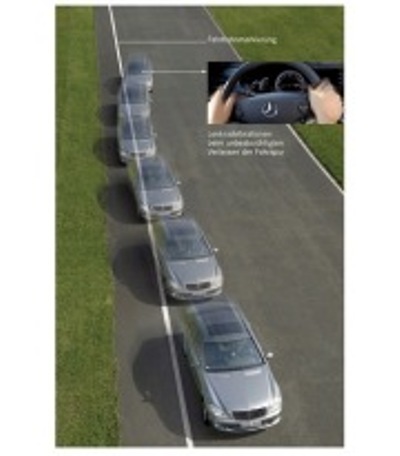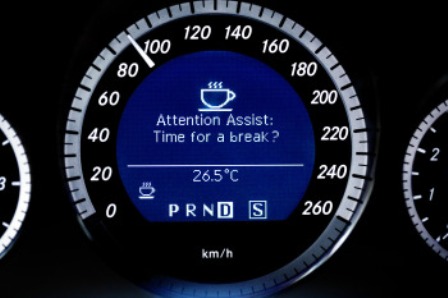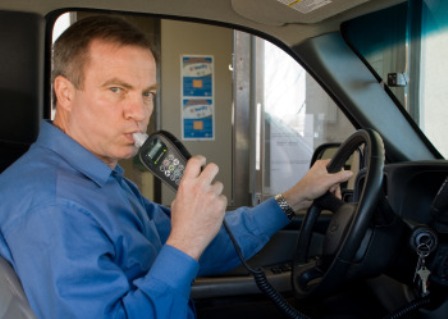Driving may be the most hazardous thing we do every day. Combine the activity’s inherent dangerousness with error-prone human drivers who are increasingly distracted by things like smartphones, and it’s no surprise that the crash statistics keep going up.
But automotive safety and convenience technology is advancing by leaps and bounds. The latest crop of smart features can correct veering steering, sense and alert a drowsy driver, and even wrest the driving from human control altogether. In addition, several fantastic apps promise to make our time behind the wheel much easier and safer.
Related Stories
– LTE Test-Bed Coming to Canada
– In-car tech at the 2012 Canadian International Auto Show
– Tech on wheels
…
But with all this new tech looking over our shoulder, is driving still fun? Is it the free-wheeling, self-determined, all-American high-speed kick that it used to be?
Between the white lines
Normally, the person driving the car is responsible for keeping it between the white lines on the roadway. But today’s passive and active lane-assist technology can do that job for you.The passive systems feature a camera to monitor the road’s lines, a computer to analyze the images, and a combination of audio information, visual data, and steering wheel vibrations to warn the driver when the vehicle starts drifting. Active lane-assist systems take it to the next level, using automatic braking to slow you down or steering torque to point you in the right direction. Some vehicles use just one type of system; high-end models may use both passive and active systems.
Digital nagging for drowsy driving
Though common sense tells you not to drive when you’re tired, plenty of groggy drivers venture out onto America’s thoroughfares anyway. Mercedes-Benz’s Attention Assist system combats drowsiness and distraction by warning the driver when it detects abnormal steering.
Using a steering sensor and special software, Attention Assist measures 70-plus parameters of driving behavior during the first few minutes of operation, from which it establishes a unique driver profile. It then refers to this profile at speeds between 50 and 112 mph to identify a drowsy driver’s erratic steering correction. When the driver starts to exhibit certain behaviors associated with drowsiness, an audible warning sounds, and a visual warning illuminates.
Keep those thumbs on the wheel
Driving While Texting (DWT?) has caused thousands of deaths on America’s highways. But a wave of new technologies may help us stop the carnage.
The 2010-up Ford Sync’s Audible Text Messaging feature offers hands-free text reading and replying. The driver’s phone syncs via Bluetooth, and alerts the driver when new texts arrive. Sync will read texts out loud through the vehicle’s speakers, and the driver can send preset or customized responses without taking a finger off of the steering wheel. At this writing, however, Audible Text Messaging is compatible with only a handful of phones, so you might be better off downloading a freestanding voice recognition app from the App Store or from Google Play.
Put the smartphone down
Whether you’re texting, emailing, or surfing the Web behind the wheel, distracted driving increases your chances of having an accident. And if your sexy smartphone is simply too tempting to leave alone, apps such as PhoneGuard will gladly disable it for you.
PhoneGuard uses GPS tracking to monitor your vehicle’s speed. Once you reach 10 mph, PhoneGuard locks your phone’s keyboard and suspends the phone’s text, email, and Web functions. The app responds to incoming texts via Text Block with Auto Reply. The PhoneGuard Premium upgrade, which starts at $20 a year, adds many other features.
The regular PhoneGuard app is free and available through Google Play for Android, through App World for BlackBerry, and through the App Store for iPhone.
Booze breath in the car
An ignition interlock device prevents an alcohol-impaired person from adding to the United States’ annual toll of 10,000-plus drunk-driving fatalities.
Ignition interlock installations such as Smart Start’s SSI-20/20 may be attached to an offender’s car following a DWI conviction and subsequent court order. Such systems connect to the on-board computer system via a wire through the car’s ignition and require the driver to pass a breath-analysis test before the vehicle will operate.
With the ignition turned on, the unit initializes. The test taker then blows into the mouthpiece. Inside the unit, an alcohol-specific fuel cell sensor and a breath sampling system analyze the alcohol level in the subject’s breath. If it falls below a predetermined allowable limit, the display will show ‘PASS’ and the vehicle can be started. If the person’s level is close to the limit, ‘WARN’ will appear but the vehicle will still start. But if ‘FAIL’, ‘VIOLATION’, or ‘ABORT’ appear, the vehicle will remain disabled until the driver passes a follow-up test.
Breathalyzers may come standard
In 2007, Nissan unveiled a concept car featuring alcohol-detection technology: shifter-mounted odor and sweat sensors, a camera to monitor alertness via eye scan, alarms that told the driver to pull over and rest, and an ignition lock to disable the car.
Nissan, Toyota, and Volvo have all tested alcohol-detection technology, but none have built the feature into a commercially released car. That state of affairs could soon change, however.
The Automotive Coalition for Traffic Safety and the National Highway Traffic Safety Administration are exploring the feasibility and benefits of widespread use of in-vehicle technology to prevent alcohol-impaired driving. The goal is to create an unobtrusive system that quickly and accurately measures a driver’s blood alcohol concentration, and prevents drunks from driving.
Two advanced technologies are currently under consideration. One of these, Tissue Spectrometry, fires an infrared light through the user’s skin. The light scatters and returns to the skin’s surface, where an optical touchpad collects it and software determines the person’s tissue alcohol concentration.
The other technology, Distant Spectrometry, gauges concentrations of carbon dioxide in a person’s breath as a measure of dilution (and hence of alcohol concentration) in the breath. Multiple sensors located in the vehicle’s cabin would determine which breath sample belonged to the person in the driver’s seat, and which were from passengers.
Prototypes of each design–and calibration devices for each–continue to be tested, and the team hopes to have demonstration research vehicles available by 2013. Eventually, if all vehicle manufacturers adopt the final system(s), the technology could help prevent an estimated 8000 road deaths in the United Sates annually.
OnStar takes care of it
OnStar offers a full menu of connectivity, diagnostic, emergency, navigation, and security services to help you avoid doing something stupid, and to cover you when bad things happen. RemoteLink can unlock your doors when you lock yourself out; Hands-Free Calling can prevent a distracted-driving crash, and Automatic Crash Response can automatically summon emergency services if you end up wrecking your joint anyway.
There’s an insurance angle, too. OnStar’s partnership with GMAC insurance has spawned the Low-Mileage Discount, a 35-state plan for drivers who log fewer than 15,000 miles a year, and have an active OnStar subscription and OnStar Vehicle Diagnostics. Once a driver signs up an OnStar-equipped vehicle for the program, GMAC confirms the vehicle’s mileage through OnStar, and then offers a discount of up to 54 per cent.
No, really…where’s my car?
For the directionally challenged, perpetually distracted, or oft-inebriated, forgetting where the car is parked is a common–and embarrassing–occurrence. Fortunately for them, several great apps can step in when the driver’s memory goes into sieve mode.
Find My Car for iPhone 2.0 is a free app that uses GPS to pinpoint your ride’s position on a map after you’ve parked it. You can also snap a photo and add a description of the parking spot. To find it again, the app shows you your car on a map, tells you how far away it is, and provides the shortest walking route to get to it.
Parkdroid 2.3.1, a similar app for Android, uses GPS to tag your parking location. It displays free and paid parking locations on the map, shows users’ favourite parking spots, and sounds a parking meter alarm to help you thwart the meter maids.
For better driving, remove the human
Google’s autonomous vehicles offer a high-tech fix for all of the stupid things people do behind the wheel. Each of these Toyota Priuses is packed with technology: four radar units mounted in the bumpers keep tabs on freeway traffic, a camera by the rearview mirror detects and monitors traffic lights, and a GPS/inertial measurement unit/wheel encoder pinpoints the vehicle locations and movements. A roof-mounted, 64-beam laser range finder performs 3D mapping and then combines the data with high-resolution maps. The result is a car with the ability to drive itself, avoid pesky pedestrians, and even respect traffic laws.
The cars in Google’s fleet have logged nearly 200,000 miles; they’ve raced around obstacle courses, and they’ve delivered a blind man to Taco Bell. In short, they drive much better than most people do. Where autos are concerned, they are the ultimate in “nanny” technology–because in this case, the nanny takes over completely.
Someday, when robotic cars supplant human-driven ones, and personal transportation is perfect and accident-free, we crazy humans will have to find other ways of injuring, embarrassing, and killing ourselves. Somehow I think we’ll come up with something. Maybe in Second Life.







